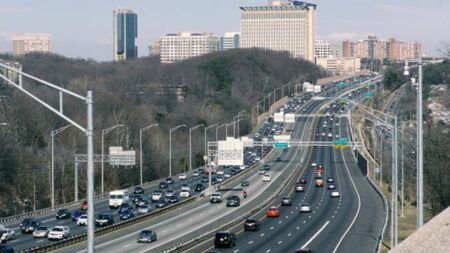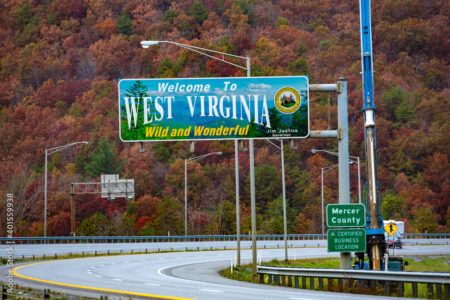Governor Larry Hogan has announced that the Maryland Department of Transportation’s (MDOT) State Highway Administration (SHA) is investing US$50.3m to deploy cutting-edge ‘smart traffic signals’ on 14 major corridors across the state.
The system uses real-time traffic conditions data and computer software that adjusts the timing of traffic signals, synchronizes the entire corridor, and effectively deploys artificial intelligence to keep traffic moving, improving vehicle flow and easing congestion for the approximately 679,200 drivers that use the routes per day.
Smart signals operate with an adaptive signal control system that uses enhanced detection to monitor real-time conditions and alter the timing of traffic lights. The smart signals will replace existing controls that are over 20 years old and are unresponsive to the constant changes in traffic flow, operating on pre-programmed timing.
Crashes, construction, and special events all contribute to congestion, but with the innovative new technology, those factors are quickly considered and the software adjusts the timing to the signals accordingly.
MDOT SHA operates more than 2,500 signals as part of 250 intersection control systems. Traffic engineers will select intersections to upgrade to smart signals based on many factors, including traffic volume, intersection capacity, and traffic patterns. MDOT SHA conducted a smart signal pilot study on SR 24 between Singer Road and Boulton Street in Harford County. Preliminary results indicate a travel time reduction of 13% for the 40,000 daily drivers.
The Smart Signal Network is the second phase of Hogan’s Traffic Relief Plan. Last month, he announced the first phase to invest US$9bn to add four new lanes to I-270, the Capital Beltway (I-495), and the Baltimore-Washington Parkway (SR 295). Through a public-private partnership (P3), MDOT is seeking private developers to design, build, finance, operate and maintain new lanes on I-495 and I-270.
The Maryland Transportation Authority will build, operate and maintain the new lanes on SR 295. In April, Hogan announced the advancement of the state’s US$100m I-270 Innovative Congestion Management Project to deliver dynamic traffic management along the entire corridor by 2019.
“Last month, our administration introduced a bold Traffic Relief Plan beginning with three massive, unprecedented projects to widen the Capital Beltway, I-270, and the Baltimore-Washington Parkway,” said Hogan.
“This next phase will employ the newest technology to further ease congestion in Maryland. By replacing 20-year-old existing controls with smart traffic signals, we will have the ability to respond to changes in traffic flow, as well as traffic conditions immediately; benefiting nearly 700,000 Maryland citizens across the state.”




